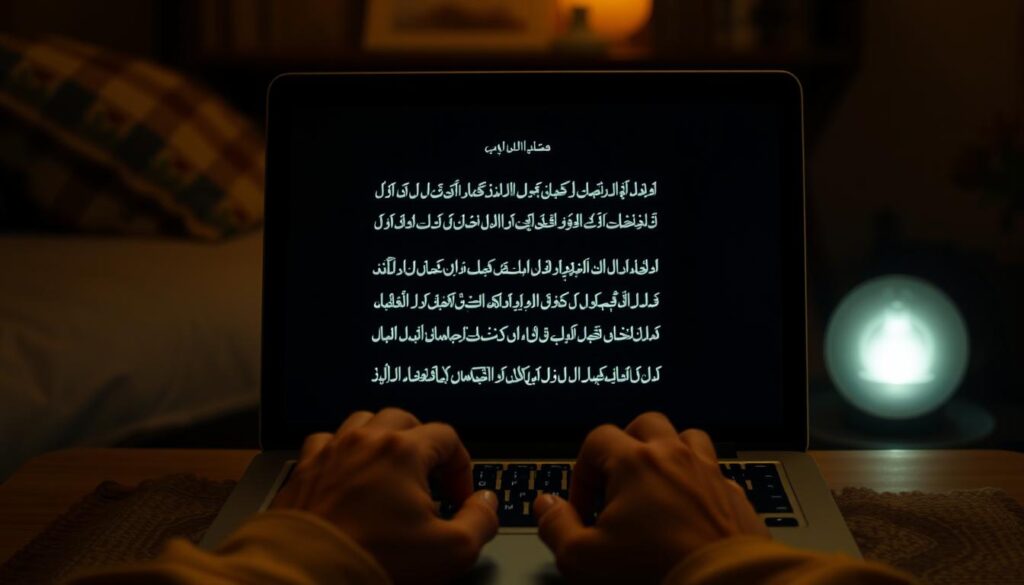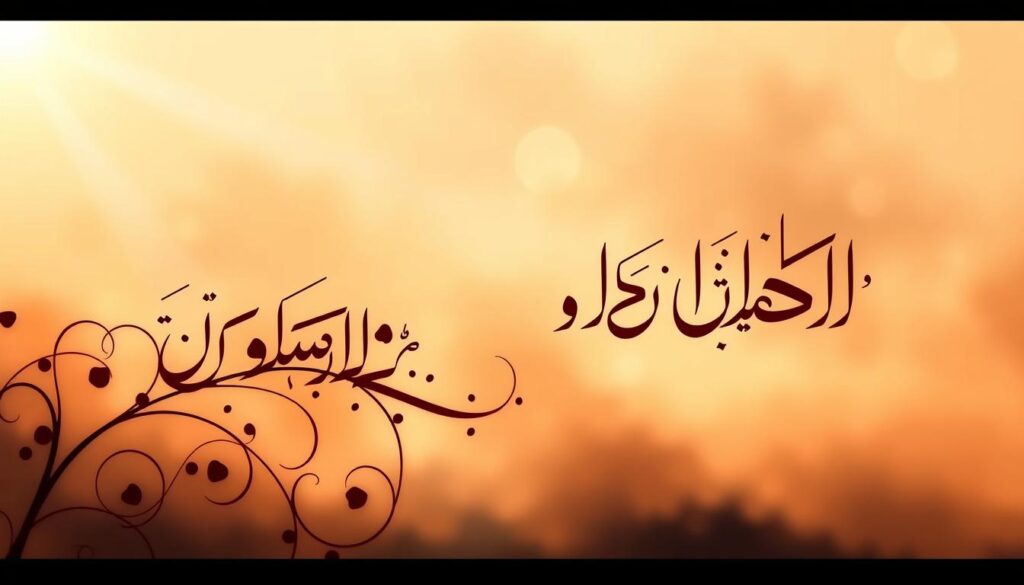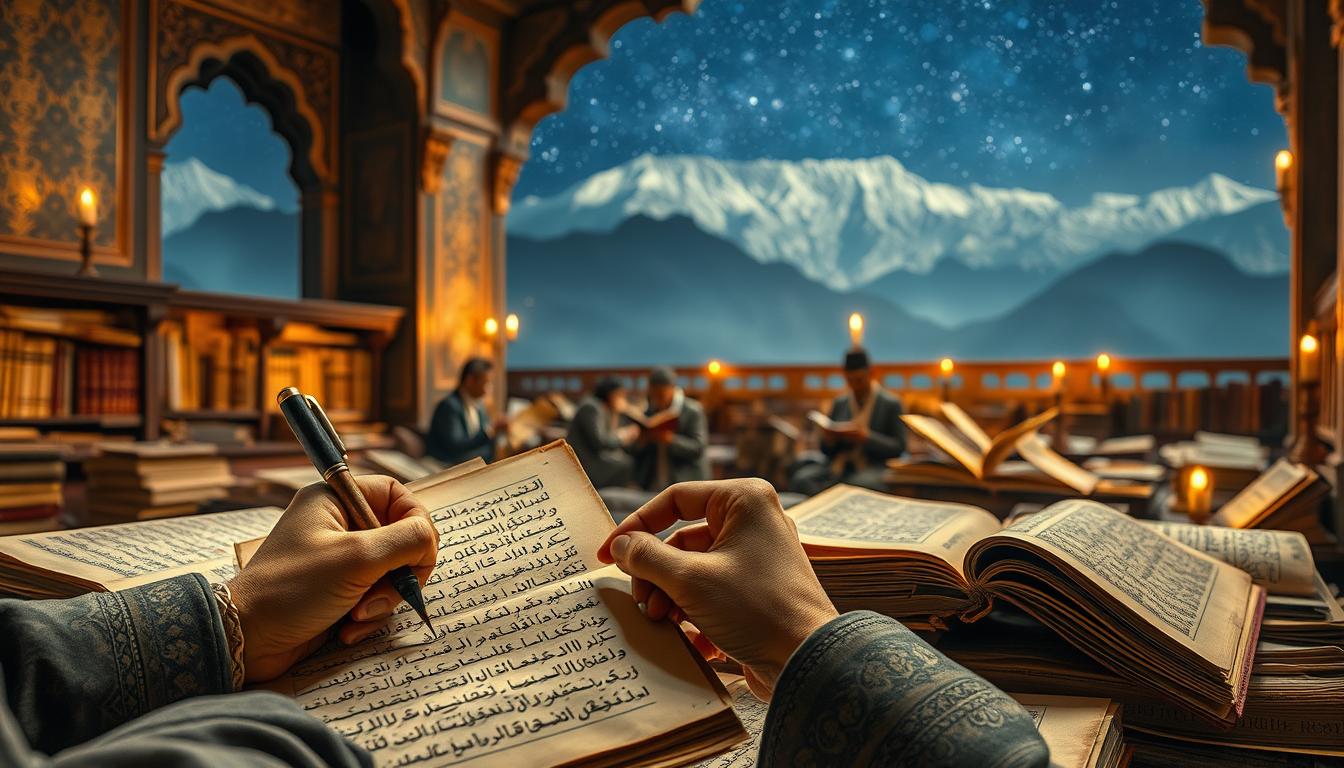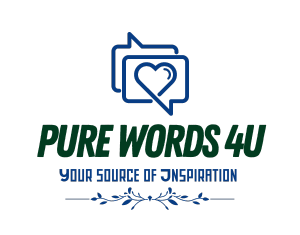The Evolution of Urdu Poetry in the Digital Age
Can traditional Urdu poetry flourish in today’s digital world? The rise of digital technology has not only saved but also amplified Urdu poetry, reaching more people than ever.
The digital realm has revolutionized how we engage with Urdu poetry. Social media, online literary magazines, and digital poetry platforms have streamlined the process of sharing and accessing poetry. This has opened doors for poets to showcase their work and for readers to explore a vast poetry library.
This transformation has democratized Urdu poetry, ushering in fresh voices and recognition. The digital era has also safeguarded this literary treasure, making it available worldwide.
Key Takeaways
- Urdu poetry has gained widespread popularity with digital technology.
- Social media and online platforms have made Urdu poetry more accessible.
- New voices are emerging in Urdu poetry due to digital platforms.
- The digital age has preserved Urdu poetry for a global audience.
- Urdu poetry has evolved significantly in the digital era.
The Rich Heritage of Urdu Poetry
Urdu poetry’s roots lie in the classical era, evolving significantly over time. It has been influenced by diverse cultural and literary traditions. This evolution has made Urdu poetry a unique mix of historical and modern elements.
The historical context of Urdu poetry is essential for grasping its development. It has been shaped by cultural exchanges and literary movements across different eras. This has enriched it, making it rich and diverse.
Origins and Historical Significance
Urdu poetry's origins trace back to the Deccan region of India, emerging as a distinct form in the 14th century. Its language and style were influenced by local dialects, Persian, and Arabic. This reflects the multicultural heritage of the region.
Urdu poetry's historical significance lies in its ability to capture the essence of various cultural and social movements. It has served as a medium for expressing love, social critique, and political commentary. This makes it a vital part of the region's literary history.
Key historical milestones include:
- The development of Urdu as a distinct language in the Deccan Sultanates
- The influence of Sufi literature on Urdu poetry, introducing themes of love and spirituality
- The role of the Mughal Empire in promoting Urdu as a courtly language
Classical Forms and Conventions
Classical Urdu poetry adheres to specific forms and conventions. The Ghazal, for example, is a traditional form that explores love, loss, and spirituality. It has been a cornerstone of Urdu poetry.
"Urdu poetry is a reflection of the soul of the people who speak it, capturing their joys, sorrows, and aspirations."
Other classical forms, like the Nazm and Qasida, each have unique characteristics and thematic focuses. These forms have shaped the literary landscape of Urdu poetry.
The conventions of Urdu poetry, such as the use of metaphor, allegory, and symbolism, have been passed down through generations. This has enriched its expressive capabilities.
Traditional Urdu Poetry: Themes and Styles
Traditional Urdu poetry delves into themes and styles, mirroring the cultural and historical contexts of its era. It encompasses various forms, each with its distinct characteristics and expressive capabilities.
Ghazal: The Cornerstone of Urdu Poetry
The Ghazal stands as a cornerstone in Urdu poetry, celebrated for its lyrical beauty and emotional depth. It explores themes of love, spirituality, and social issues, adhering to a couplet structure with a specific rhyming scheme. This form has captivated poets and readers, conveying complex emotions through simple yet impactful language.
Nazm, Qasida, and Other Forms
Urdu poetry extends beyond the Ghazal, embracing forms like Nazm and Qasida. Nazm serves as a narrative form, addressing contemporary themes and issues. Qasida, on the other hand, is a classical form that praises or satirizes individuals or events. These forms enrich Urdu literature, allowing poets to explore a broad spectrum of subjects and styles.
Masnavi and Marsia also hold significant roles in Urdu poetry, each with unique characteristics. Masnavi is suited for longer narrative poems, often with moral or spiritual themes. Marsia, an elegy, is used to mourn the deceased.
Prominent Classical Urdu Poets and Their Legacy
Urdu poetry has been shaped by numerous classical poets, whose works continue to influence contemporary literature. Poets like Ghalib and Faiz Ahmed Faiz are celebrated for their contributions. Ghalib's Ghazals are renowned for their philosophical depth and lyrical beauty. Faiz's poetry, meanwhile, is celebrated for its progressive themes and emotional resonance.
The legacy of these poets is not only preserved in print but also celebrated online. Many websites and platforms are dedicated to sharing their works and discussing their significance. This digital presence has made it easier for new generations to discover and appreciate the richness of traditional Urdu poetry.
The Evolution of Urdu Poetry in the Digital Age
The digital age has dramatically changed Urdu poetry, from its creation to how it's shared and enjoyed. This change is mainly due to the move from traditional methods to digital platforms.
Transition from Oral and Print to Digital Mediums
Urdu poetry's traditional ways, like oral recitations and print, have seen a big boost from digital mediums. Social media platforms, blogs, and dedicated websites have become key for poets to share their work. This shift has made Urdu poetry more accessible and reached a wider audience globally.
Impact of Technology on Poetic Expression
Technology has deeply influenced Urdu poetry. The digital world lets poets try new forms and styles, adding multimedia like audio and video recordings to their work. Social media also gives poets quick feedback, helping them refine their craft based on audience reactions.
The way people consume Urdu poetry has also changed, with online platforms becoming the norm. This shift has made Urdu poetry more accessible, drawing in a larger audience to appreciate the art.
Digital Platforms Transforming Urdu Poetry
The advent of digital platforms has revolutionized the way Urdu poetry is consumed and appreciated. This transformation is multifaceted, involving various digital mediums. These mediums have collectively contributed to the evolution of Urdu poetry.
Social media platforms have emerged as a significant vehicle for poetic expression. Platforms like Instagram, Facebook, and Twitter have given poets a global stage to share their work. For instance, many Urdu poets use Instagram to share their poetry through visually appealing posts and stories. This makes it easier for a younger audience to engage with this traditional form of poetry.

Social Media as a Vehicle for Poetic Expression
Social media has not only provided a platform for established poets but has also given a voice to new and emerging poets. The ease of content creation and dissemination has democratized the Urdu poetry landscape. This allows diverse voices to be heard. Online communities centered around Urdu poetry have also flourished on these platforms.
Urdu Poetry Apps and Websites
Specialized apps and websites dedicated to Urdu poetry have also gained popularity. These platforms offer a vast repository of Urdu poetry, making it easily accessible to enthusiasts worldwide. Many of these platforms also feature contemporary poets. This bridges the gap between traditional and modern forms of Urdu poetry.
Online Communities and Virtual Mushairas
The rise of online communities and virtual Mushairas (poetry symposia) has further transformed the way Urdu poetry is experienced. These virtual events allow poets to gather, share their work, and engage with audiences in real-time, regardless of geographical constraints. This has not only preserved the traditional essence of Mushairas but has also made them more inclusive and accessible.
The digital transformation of Urdu poetry is a testament to the adaptability and resilience of this ancient art form. As digital platforms continue to evolve, it will be interesting to see how Urdu poetry further adapts and thrives in the digital landscape.
Language and Script in the Digital Realm
The digital age has transformed the Urdu poetry scene, bringing both benefits and hurdles, especially concerning language and script.
The leap forward in Unicode support has made Urdu script representation online more precise. This breakthrough is key for contemporary Urdu poetry, enabling poets to disseminate their work broadly.
Unicode Support and Digital Typography
Unicode's adoption has streamlined the digital display of Urdu characters. This ease is crucial for poets and readers to engage with Urdu poetry online.
Digital typography has also been pivotal in boosting the readability and beauty of Urdu poetry on digital platforms.
| Feature | Pre-Unicode | Post-Unicode |
|---|---|---|
| Character Representation | Limited and often inaccurate | Accurate and consistent |
| Typography | Basic and often distorted | Enhanced and visually appealing |
| Accessibility | Limited to specific platforms | Widely accessible across platforms |
Transliteration and Accessibility Challenges
Despite progress, transliteration remains a hurdle for Urdu poetry online. The intricacy of Urdu script and its different forms complicates accurate transliteration.
Accessibility is another concern, as not all digital platforms support Urdu. This limitation restricts the reach of contemporary Urdu poetry.
To tackle these obstacles, enhancing Unicode support and creating advanced transliteration tools is crucial.
By tackling these challenges, we can improve Urdu poetry's online visibility. This will make it more accessible to a global audience.
Democratization of Urdu Poetry
The digital age has brought a significant change to Urdu poetry, making it more accessible to a broader audience. This shift has broken down traditional barriers, allowing Urdu poetry to reach beyond its usual confines.
Thanks to digital media, Urdu poets online can now share their work globally. This has opened doors to recognition for poets beyond their local circles. It has also encouraged a new wave of voices to enter the scene.
Breaking Traditional Barriers to Entry
Urdu poetry was once limited to specific circles, requiring a certain status to be acknowledged. But the digital world has changed this.
- Social media platforms have given poets a direct channel to their audience.
- Online forums and communities have made it easier for new poets to get feedback and recognition.
- Digital publications and blogs have emerged as significant platforms for publishing and promoting Urdu poetry.
This has led to a more diverse and vibrant contemporary Urdu poetry scene. Poets from different backgrounds can now share their views and connect with readers globally.
Contemporary Urdu Poets in the Digital Landscape
In today's digital age, Urdu poets are pushing the limits of their craft, exploring new ways to express and share their art. The internet and social media have become essential tools for them. They now reach a global audience with ease.
Emerging Voices and Their Digital Presence
New Urdu poets are making their mark online, using digital platforms to connect with readers worldwide. They publish on social media, blogs, and online journals. This helps them build a community around their poetry.
Digital platforms have opened up Urdu poetry to fresh voices, bypassing traditional barriers. This has introduced a variety of themes and styles, enhancing the genre.
Blending Tradition with Modern Sensibilities
Urdu poets today are not just using digital tools but also merging old forms with new ideas. They experiment with themes, styles, and structures, keeping the essence of Urdu poetry alive.
Many poets are tackling contemporary issues like social justice, identity, and personal stories in their work. This makes Urdu poetry more accessible to today's readers. The fusion of tradition and modernity is breathing new life into the genre, drawing in a younger audience.
Multimedia and Experimental Approaches
The digital revolution has transformed Urdu poetry, enabling the incorporation of multimedia elements that enhance its appeal and reach. This evolution is characterized by the emergence of new forms of poetic expression. Visual poetry and graphic designs, as well as the fusion of poetry with music and performance arts, have become prominent.
Visual Poetry and Graphic Designs
Urdu poetry has traditionally been appreciated for its lyrical and aesthetic qualities. The digital age has seen the rise of visual poetry, where the visual arrangement of words on a page or screen adds a new layer of meaning to the poem. Graphic designs and typography play a crucial role in enhancing the visual appeal of Urdu poetry, making it more engaging for modern audiences.
The use of graphic designs in Urdu poetry not only beautifies the presentation but also provides an additional layer of interpretation. Poets and designers collaborate to create visually stunning pieces that reflect the themes and emotions of the poetry. This fusion of visual arts with Urdu poetry has opened up new avenues for creative expression.
| Technique | Description | Impact on Urdu Poetry |
|---|---|---|
| Visual Poetry | Arrangement of words to enhance meaning visually | Adds a new layer of interpretation |
| Graphic Designs | Use of typography and graphics to beautify poetry | Enhances visual appeal and engagement |
| Fusion with Music | Combining poetry with music for enhanced expression | Provides a new medium for emotional expression |
Fusion with Music and Performance Arts
The fusion of Urdu poetry with music and performance arts has been a significant development in the digital era. Poetry recitals and mushairas are now often accompanied by music, creating a more immersive experience for the audience. This blend of traditional poetry with contemporary performance arts has helped in reaching a wider and more diverse audience.
Furthermore, the rise of digital platforms has enabled poets to share their work globally, transcending geographical boundaries. The incorporation of music and performance elements into Urdu poetry has not only enhanced its appeal but also contributed to its evolution as a dynamic and contemporary art form.

The evolution of Urdu poetry in the digital age is a testament to its adaptability and resilience. As technology continues to advance, it is likely that Urdu poetry will continue to evolve, incorporating new forms of expression and reaching new audiences worldwide.
Challenges and Opportunities in the Digital Era
The digital era has brought a new era for Urdu poetry, filled with challenges and opportunities. Urdu poetry must now face issues like preserving linguistic authenticity, reaching global audiences, and navigating commercialization. These factors shape its future in the digital age.
Preservation of Linguistic Authenticity
One major challenge for Urdu poetry in the digital era is preserving its linguistic authenticity. The digitization of Urdu poetry demands careful handling to keep its nuances and beauty intact. This means accurately representing Urdu script online and preserving its cultural heritage.
Unicode support and digital typography are key to maintaining Urdu poetry's authenticity online. By ensuring Urdu script is displayed correctly, poets and readers can engage with the language as it was meant to be.
Reaching Global Audiences
The digital age has opened doors for Urdu poetry to reach global audiences. Social media platforms and dedicated Urdu poetry websites allow poets to share their work worldwide. This expansion promotes Urdu poetry and fosters a deeper understanding of Urdu literature.
Online communities and virtual mushairas have become popular, offering a space for poets to connect and share. These platforms democratize Urdu poetry, enabling new voices to emerge and gain recognition.
Commercialization and Monetization
The digital era also brings opportunities for the commercialization and monetization of Urdu poetry. With e-books, online publications, and digital audio platforms, poets can now reach more people and earn income. This shift could sustain Urdu poetry and support poets in their creative pursuits.
Yet, the commercialization of Urdu poetry raises concerns about its cultural and artistic integrity. It's crucial to find a balance between making Urdu poetry accessible and profitable, while keeping its essence and authenticity intact.
The Future of Urdu Poetry in a Connected World
In today's interconnected world, Urdu poetry's future is set to be influenced by technological progress and cultural exchange. This development promises to introduce new trends and innovations, enriching the contemporary Urdu poetry scene.
Emerging Trends and Innovations
The digital age is ushering in fresh perspectives in Urdu poetry. Poets are now exploring new styles and themes. This evolution, part of the Urdu poetry evolution, sees traditional forms reimagined for today's readers.
Emerging trends include the integration of multimedia, like videos and animations, to enrich the poetic experience. Online platforms are also making it easier to find new voices in contemporary Urdu poetry.
- Increased use of digital platforms for poetry dissemination
- Experimentation with new forms and styles
- Collaboration between poets from different cultural backgrounds
Cross-Cultural Collaborations and Influences
The modern world's global connectivity is set to boost cross-cultural collaborations in Urdu poetry. Poets will now have more chances to work with international artists, leading to a vibrant exchange of ideas and influences.
This cross-cultural exchange will likely bring forth new themes and styles, broadening the contemporary Urdu poetry landscape. It marks a significant part of the Urdu poetry evolution, as it adapts to the globalized world.
By embracing these changes, Urdu poetry is ready to preserve its traditional essence while innovating and flourishing in the digital era.
Conclusion
The digital age has revolutionized Urdu poetry, changing how it's created, consumed, and shared. Now, with Urdu poetry online, a worldwide audience can enjoy the rich heritage of Urdu literature.
As technology advances, Urdu poetry will likely evolve further. It will embrace new forms of expression and reach diverse audiences. Digital platforms have democratized Urdu poetry, offering a global stage for poets to display their work.
The future of Urdu poetry is bright, with chances for cross-cultural collaborations and innovative storytelling. Online, Urdu poetry is set to attract new readers and inspire a fresh wave of poets.
FAQ
What is the significance of Urdu poetry in the digital age?
Urdu poetry has seen a surge in popularity with the advent of digital platforms. These platforms offer new ways for poets to express themselves and reach a broader audience.
How has technology impacted the traditional forms of Urdu poetry?
Technology has transformed Urdu poetry from its traditional forms to digital ones. This shift has opened up new avenues for innovation while still honoring the old ways.
What role do social media and online communities play in promoting Urdu poetry?
Social media and online communities are vital in promoting Urdu poetry. They allow poets to share their work, engage with readers, and participate in virtual Mushairas.
What are the challenges associated with representing Urdu poetry in the digital realm?
Representing Urdu poetry digitally comes with challenges like language and script issues. Despite progress in Unicode and digital typography, transliteration and accessibility remain hurdles.
How have digital platforms democratized Urdu poetry?
Digital platforms have democratized Urdu poetry by removing traditional barriers. This has allowed new voices to emerge and expanded the poetry's audience beyond geographical limits.
What is the current trend in contemporary Urdu poetry?
Contemporary Urdu poetry blends traditional forms with modern sensibilities. Emerging poets use digital platforms to express themselves and connect with readers.
How is Urdu poetry being innovated and experimented with in the digital age?
Urdu poetry is innovating through multimedia, including visual poetry, graphic designs, and fusion with music and performance arts.
What are the potential challenges and opportunities for Urdu poetry in the digital era?
Urdu poetry faces challenges like preserving linguistic authenticity and reaching global audiences. However, it also has opportunities for growth and innovation in the digital era.
What is the future of Urdu poetry in a connected world?
The future of Urdu poetry will be shaped by emerging trends and innovations. It will likely involve cross-cultural collaborations and influences as it continues to evolve digitally.
How is modern Urdu poetry different from traditional Urdu poetry?
Modern Urdu poetry incorporates modern themes, styles, and sensibilities. Yet, it still draws upon traditional forms and conventions.
What is the role of online platforms in promoting Urdu poets?
Online platforms are crucial in promoting Urdu poets. They provide a global audience, enabling poets to share their work and connect with readers and other poets.
editor's pick
latest video
news via inbox
Nulla turp dis cursus. Integer liberos euismod pretium faucibua





